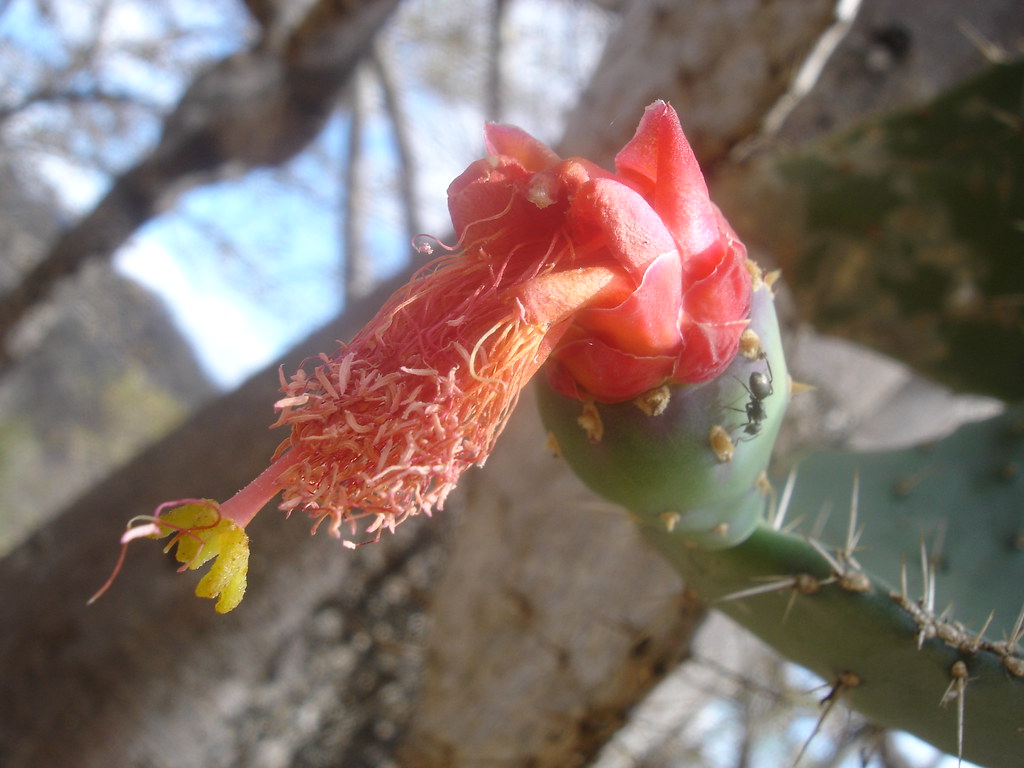
|
Family: Cactaceae |
Trees or shrubs, erect or branches sometimes pendent, branched, 1-6(-10) m; trunk absent or elliptic in cross section, becoming ± terete with age, originating from consecutive pads, main axis determinate and segmented. Stem segments flattened, narrowly linear to obovate or falcate, 6-30(-50) × 3-10(-15) cm, low to strongly tuberculate; areoles on both surfaces, commonly elevated, elliptic to subcircular, 3-6 × 2-5 mm; wool tan to white. Spines absent or 1-3(-12) per areole, stout to hairlike, with epidermis intact, not sheathed. Glochids scattered in areole to densely arranged in tuft at adaxial margin, yellow, brown, or red-brown. Flowers bisexual, radially symmetric, 3-7(-10) cm; tepals erect; inner tepals closely appressed against numerous, slender filaments; filaments and style much exceeding perianth, pink to red or scarlet; fresh stigma lobes light green, aging pink; nectar chamber covered by extended proximal thickening of style. Pollen yellow to pink, 12-porate, with very fine punctae and spinulae, cohesive, sticky. Fruits red or sometimes aging purplish, cylindric or ellipsoid (circular in cross section), 15-50 × 20-40 mm, juicy, often tuberculate, spineless or spiny, with very deep umbilicus. Seeds grayish or tan to brownish, flattened, notched at hilum, 3-5.5 mm diam., smooth to lumpy, covered by bony funicular envelope, glabrous or slightly hairy; girdle protruding to 1.5 mm. x = 11. Plants of Nopalea are pollinated by hummingbirds, and their winter flowering coincides with hummingbird migration. The stems and flowers are edible and used as forage. The plants are used medicinally as a tea to relieve kidney-stone pain and as a poultice on wounds. They are also used as hedges and living fences.
|
This project was made possible in part by the Institute of Museum and Library Services [MG-70-19-0057-19].
Powered by Symbiota



